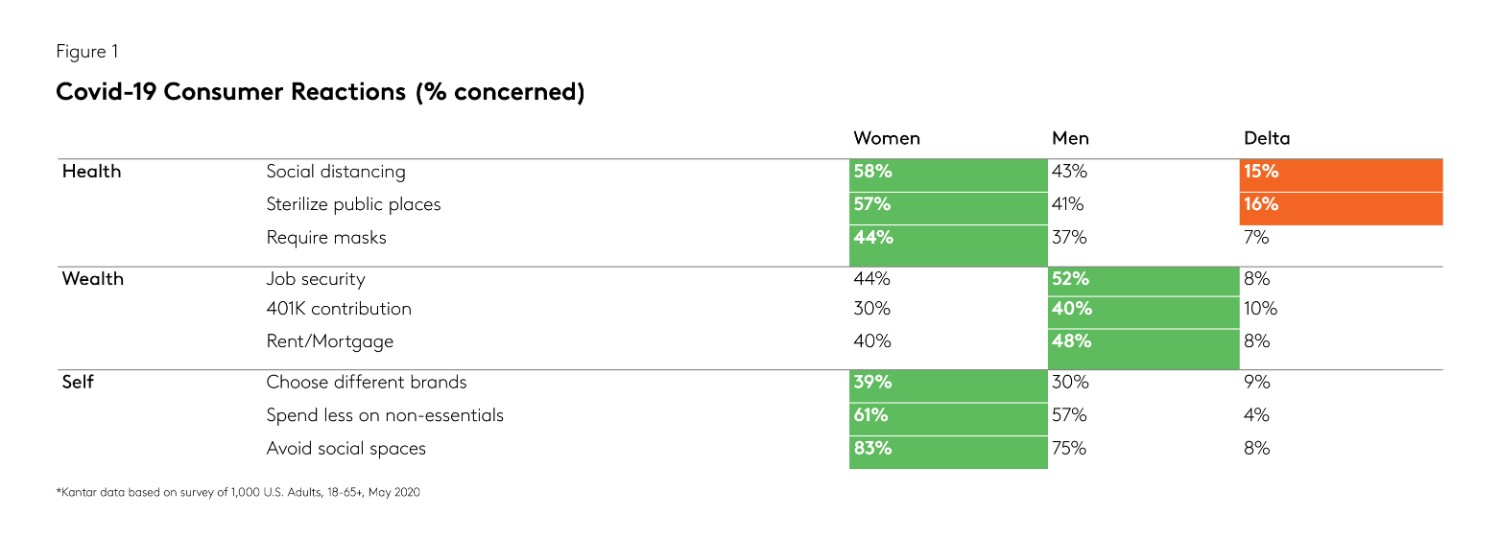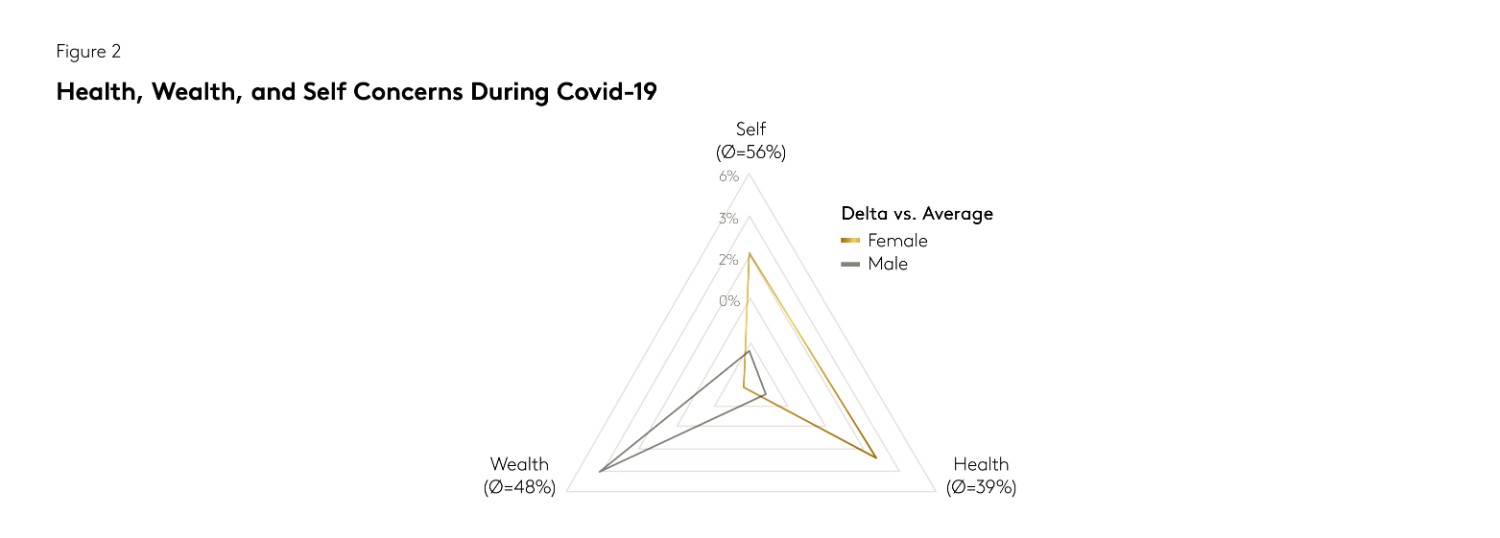While the physical health impacts of COVID-19 vary between women and men, there are also marked differences in how each gender responds to the virus. Kantar has identified significant variability in the US between the sexes in three key areas: Health, Wealth, and Self. For marketers, understanding these differences is now critical to ensure their brand remains relevant to all consumers over the course of the pandemic and through its repercussions.

Looking at the Health, Wealth, and Self dimensions, men and women differ most over questions of Wealth; for example, in their level of concern about COVID-19’s impact on personal finances. Across the financial aspects that Kantar analysed, men are more concerned overall than women (52% vs. 44%), with the biggest differences emerging in areas of job security, contribution to their 401K, and paying the rent or mortgage.
On the Self dimension, women are overall more likely than men (58% vs. 54%) to restrict their lifestyle in response to the pandemic. For example, women are more willing to choose different brands than those they normally buy, and spend less on non-essential (luxury) items than men.

Importantly, women are substantially more concerned than men are about Health. These differences are particularly pronounced regarding the steps that women consider necessary to return to normal aspects of everyday life.
One of the largest gaps between women and men (15 percentage points) stems from one of the key tenets of America’s response to the pandemic: social distancing. 58% of women believe in its necessity versus 43% of men. Regular sterilization of public places was another area of significant disagreement between women and men, as was the requirement for people to wear masks outside of the home. Forty-four percent of women believe mask requirements are needed to return to normal life, compared with 37% of men.
Impact on Brands
These gender differences have tremendous implications for brand marketers. For retail, hospitality, and restaurant marketers, whose value proposition depends on physical, on-premise visits, this means quite nuanced messaging and customer experiences that balance these concerns in order to appeal to both genders. For direct-to-consumer and predominantly online brands, there is a tremendous growth opportunity to capitalize on changing consumption behaviors tied to both genders’ health and wealth concerns.
About the study
Kantar’s C-19 Pulse measures the weekly changes in attitudes and behaviors in response to the pandemic across one thousand U.S. adult men and women between the ages of 18 and 65+.
Contact Kantar today to receive the full report, which includes additional attitudinal data by gender, income, age, geography, parental status, and ethnicity, and to learn how Kantar can help you better understand and engage your consumers during this time.

